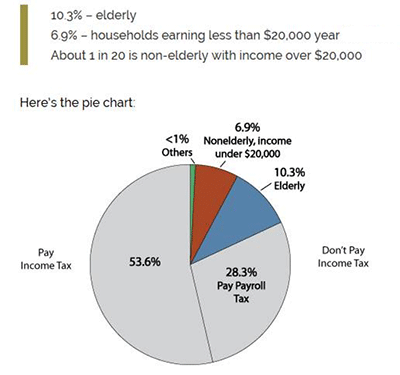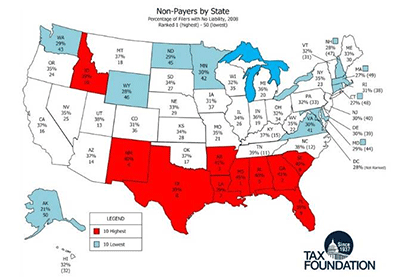"The Week"
January 21, 2014
by Jeffrey Saut, Chief Investment Strategist, Raymond James
Arguably, the best magazine of recent times has been The Week, a publication that embraces magazine journalism in its most functional style. The Week is written in one-hundred synopses culled, for the most part, from other news organizations from around the world on all topics. If I had but one publication to read in order to stay informed on just about everything, it would be The Week. In this morning’s missive, however, I am referring to "the week" I experienced last week in South Florida. It began on Sunday at dinner with financial types who are also dear friends. Monday was spent seeing accounts, speaking with the media, and having dinner at Caffe Abbracci, where Governor Rick Scott was present. While Tuesday was more of the same, I did speak to a few hundred individual investors at two functions in Coral Gables. On Wednesday I had three separate speaking engagements including a small dinner for high net-worth investors in Delray Beach. On Thursday we journeyed to Melbourne Beach to speak to still more investors; and, there was the surprise of the week. Indeed, those who know me understand I like Bed & Breakfast establishments and I found one of the best I have ever experienced at the Port D’ Hiver B&B captained by Mike and Linda Rydson (http://www.portdhiver.com/), but I digress. The reason for this prologue is that no matter where I spoke, I always received the same questions. I addressed the most ubiquitous question in Friday’s Morning Tack. To wit:
Over the past week, in my South Florida speaking tour to institutional accounts and individual investors, I have repeatedly been asked, "How can we have a secular bull market with the current sketchy environment?" My response has been, "The equity markets do not care about the absolutes of good or bad, but rather are things getting better or worse." And, there is no doubt that things are getting better! Here’s the problem, the majority of investors have only been involved in the stock market for the past 15 years. Therefore, their shared experience is that what you had to do was buy a stock and then sell it when it had rallied 30% – 40%. Indeed, the majority of participants have not experienced what it is like to hold a portfolio of quality stocks during a true secular bull market like last seen in the 1982 to 2000 bull market affairs. Those who do remember, recall the preferred strategy was to buy "all the dips;" and if we get such a "dip," following the anticipated rally into this month’s end (late January/early February), IMO ... it should bought!
Believe it or not, the second most asked question was about the government and once again, "How can we have a secular bull market given our dysfunctional government, where nothing gets done and class warfare is being hoisted?" Those that have been reading these comments for a while know that I believe over the next three to five years I think we are going to elect smarter policymakers and therefore get smarter policies. And that, ladies and gentlemen, is by far the theme I get the most "pushback" about. The argument usually begins with, "Forty seven percent of the people who vote pay no income taxes, and are consequently on the public dole, and thus they will never vote themselves out of a ’government paycheck’." While that headline number is true, when one drills down into the actual figures, things change. For example, the non-partisan Tax Policy Center states 46.4% of voters pay no federal income tax. However, all Americans are subject to Federal payroll taxes, federal excise taxes, and state/local taxes. According to the Emmy winning Ben Swann, who produced the fact-checking TV series titles Reality Check:
Though the 47% number is at an all-time high that is only focusing on one tax, when you look at the fact that some don’t pay any federal taxes, but pay others like those listed, the number drops to 18%. [Swann then asks] Who are these supposed ’freeloaders’ in the eighteen percent? The breakdown can be seen in the attendant chart (on page 3) from the Tax Policy Center.
Interestingly, the Tax Foundation compiled a map showing the largest "non-payer" states (see chart on page 3). The top ten states on that map are those tending to vote Republican with a large population of elderly and/or immigrants. Said map suggests the alleged 47% are not just voting themselves a "governmental paycheck." Verily, I continue to think the pendulum is swinging back toward a government that is going to deal with issues that can no longer be ignored because a tipping point is nigh. To be sure, in my four decades in this business when something absolutely had to happen, it has typically happened!
The third most asked question regarded asset allocation. Strategically, given my sense we are reaching for another short-term trading peak late month or early February, it makes sense for "businessman’s risk" suitability type of accounts to have 20% cash. As for sectors, the only three I would underweight are Consumer Staples, Telecommunications, and Utilities. Near-term, however, my work shows that the Industrial, Financial, and Consumer Cyclic sectors have the strongest momentum. Examining the individual D-J Industrial Average (INDU/16458.56) components reveals that from Raymond James’ research universe the strongest names are: Cisco (CSCO/$22.74/Outperform); Home Depot (HD/$81.00/Outperform); United Health (UNH/$72.52/Strong Buy); and Visa (V/$232.18/Strong Buy). Of particular interest was that last week the S&P 500/the Toronto Diversified Metals and Mining Index traveled above its 50-week moving average (read: bullish), which is consistent with last Thursday’s Morning Tack (by Andrew Adams) and its bullish trading call on the precious metals stocks.
Returning to the topic of the Dow Industrials (INDU), the INDU has recently been underperforming many of the other indices. Most notably, it has not joined the S&P 500 (SPX/1838.70) and NASDAQ Composite (COMP/4197.58) to new bull market highs. Moreover, as stated in past missives, the New Highs versus the New Lows ratio continues to trace out lower lows in the charts, suggesting fewer and fewer stocks are participating on the upside. While this is not necessarily an indication of a "top," it does suggest the potential for a change in the market’s leadership. This has also become apparent in weakening Groups like Restaurants, Retail/Department Stores, Retail Clothing, etc. Strategically this is understandable because during economic contractions people don’t spend on houses, autos, boats, etc. and therefore have more money for restaurants and clothes, but during an expansion the exact opposite occurs. People buy houses, washing machines, etc. and have less money to spend on restaurants. And for those who do not think we are moving into an economic expansion, I would point you to the NFIB Small Business Survey referenced in last week’s report. In that report we saw the largest increase in firms expected to hire since late 2008. Likewise firms with one or more job openings rose to 23%, while firms anticipating capital equipment "spend" in the next few months was on the rise (+24%). All of this is consistent with our belief the economy is strengthening, earnings are improving, the consumer is in pretty good shape, the credit cycle is better, M&A is picking up, loan growth is improving ... well, you get the idea.
The call for this week: It’s "Restaurant Week" in Los Angeles and I am here to do my part in eating and drinking my way through the City of Angels. In between, I will be seeing accounts and once again speaking at various events. Last week the Buying Power Index made a new high as the Selling Pressure Index traded lower. Meanwhile, there is plenty of internal energy to move the SPX higher into late-month/early-February as long as the 1808 – 1813 support level continues to hold for the SPX. And this morning, China announced its economy remained stable with a return to profitable growth, leaving its interest rates lower and our preopening futures better by 5 points.













